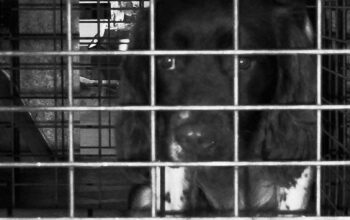Have you ever wondered: Do dogs see the world as I see it, but in a different way? or in what different ways do they see the world? Lets delve into how dogs see the world.
It is funny that there are still people on this planet who think that dogs cannot see color or that their vision is only black and white. Luckily for our four-legged friends, they do see colours for themselves, but in general their vision differ somewhat from those of humans. While we know that dogs have night vision, just as humans have the ability to see in the dark, they are more likely to see the world differently from humans.
When it comes to distinguishing colors, the normal vision of a dog is that of a person who has red-green color blindness. Dogs may not appreciate the full colour spectrum as humans do, but that does not mean they do not perceive different colours. For example, dogs see dark brown, grey and black darker than we do, but they are still able to see these colours.
Dogs see less colours than humans, but they can still see a variety of colours. For example, purple looks exactly like blue to our furry friends, but they see blue really well and purple really badly. While humans have red – green colour blindness and green – blue colour blindness, dogs have two types of vision, two of which are suspected to be green and blue.
This means that dogs can see more shades of gray than humans, but they are also able to see some colors more clearly than others, similar to humans. It is thought that dog eyes are five times more sensitive to light and see less colours than human eyes, and that they also have far better night vision than ours, which is why their eyes reflect light in the dark. This means dogs are built to look see well even after dark and are likely to see more shades of grey than humans.
The average human eye has trichromatism when it comes to colour, which means that we have cone receptors in our eyes that are able to perceive different shades of green, blue, red, yellow, orange, green and blue.
Dogs, like their human companions, don’t see a rainbow of shades of ROYGBIV, but they do see colors. Dogs also have dichromatism, which means that they have cone receptors in their eyes that can only see a limited number of different colors, such as green, blue, red, yellow, orange, green and blue. A dog (or any other animal that is two-colored) can only perceive 10,000 different colors, so unlike us, dogs must behave like humans in their ability to perceive and see color.
If you believe that dogs only see black and white, then you probably do not know that this is not the case, because they are not blind to color.
An ophthalmologist will determine whether the normal vision of a dog is the same as that of a person with red-green colour blindness. This answers one of the most frequently asked questions about whether dogs have night vision or have visual acuity to see detail.
As a result, it seems that dogs cannot easily distinguish between yellow, green and red, but they can recognize different shades of blue, purple and gray. Dog eyes have the same amount of red-green color blindness as a human eye, and their eyes have a slightly different color vision than a human eye.
Therefore, dogs do not appreciate the full spectrum of colours as humans do, and this is a common myth. Dogs have the same amount of red-green color blindness as a human eye, but they have a slightly different color vision than human eyes.
Dogs have been observed to be able to distinguish yellow and blue from green, and therefore prefer blue to yellow toy balls. However, some dogs, such as Labrador Retrievers and Labrador Retrievers – have difficulty distinguishing between blue and yellow toys and red and green toys.



